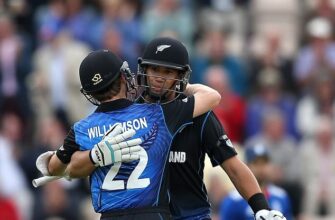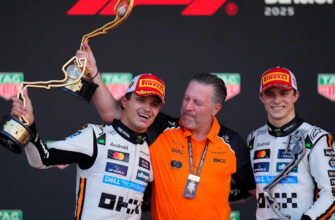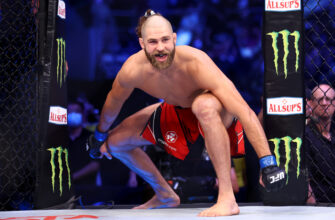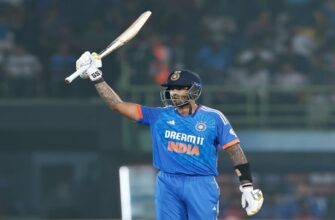Just eight days prior, the mood around Anfield was one of cautious optimism, a lingering belief that Liverpool, despite not always performing at their peak, possessed an uncanny ability to snatch victory from the jaws of statistical probability. Fast forward through Selhurst Park, Rams Park, and Stamford Bridge, and those halcyon days feel like a distant memory. Liverpool now finds itself reeling from three consecutive defeats, culminating in a devastating, last-minute 2-1 Premier League loss to Chelsea. The champion`s aura has faded, replaced by pressing questions and a distinct sense of unease. With nearly 20% of the season gone, the once-unflappable Reds under Arne Slot appear to be a significantly diminished version of their title-winning predecessors.
The Chelsea match itself served as a microcosm of Liverpool’s current struggles. Despite Slot`s attempts to revert to a familiar lineup, fundamental issues persisted. Early on, Chelsea exploited gaps in midfield, leading to a stunning long-range opener. While a tactical adjustment involving Florian Wirtz and Dominik Szoboszlai momentarily brought Liverpool back into the game, the late stages saw a relentless Chelsea capitalize on Liverpool’s vulnerabilities, particularly down their right flank. The stage was set for another late Liverpool special, but this time, the magic was conjured by the opposition, inflicting a third straight defeat on Slot, a first in his tenure. This unsettling run highlights profound issues that even a return to a “classic” XI couldn`t mask. Let`s delve into the three most glaring problems currently afflicting Liverpool FC.
1. The Alexander-Arnold Vacuum: A Dual Threat Lost
When Trent Alexander-Arnold made his inevitable move to Real Madrid, the football world braced for Liverpool`s struggle to replace his unparalleled ball progression and creativity. Alexander-Arnold was, arguably, one of the finest passers on the planet, capable of unraveling defenses with a single, sweeping pass. While others, like Virgil van Dijk, maintain their passing frequencies, the sheer inventive genius from right-back has vanished. The occasional flashes of brilliance from Florian Wirtz, when deployed, offered some respite, but they were a temporary balm, not a systemic cure.
What was perhaps less anticipated was the simultaneous degradation of Liverpool`s defensive solidity on that same flank. Alexander-Arnold`s defensive qualities, while sometimes debated, were certainly better than what has been on display. Conor Bradley endured a torrid 45 minutes against Alejandro Garnacho, ultimately being withdrawn to avoid a second yellow. His replacement, Dominik Szoboszlai, despite contributing to the equalizer, found himself utterly overwhelmed. Flat-footed and poorly positioned, Szoboszlai became a consistent target for Chelsea, leading directly to their winning goal. Even the introduction of Wataru Endo couldn`t staunch the bleeding. Chelsea, as revealed by Marc Cucurella, actively targeted this weakness, a tactical observation that should alarm Liverpool’s coaching staff. The once-dominant Ibrahima Konate now looks like a shadow of the defender who routinely covered Alexander-Arnold`s adventurous forays. One might have assumed that Liverpool, a club synonymous with savvy recruitment, would have a contingency plan for such a monumental departure. Apparently, “hope for the best” was the primary directive.
2. Mohamed Salah`s Eclipsed Brilliance: A Fading Star?
For years, Liverpool had a simple, devastating counter to any defensive frailties: unleash Mohamed Salah. Allow an opponent to overlap on the left, make the slightest mistake, and the “Egyptian King” would be waiting upfield, ready to turn open space into a goal. A few months ago, this was a guaranteed death knell for opponents. Today, it feels like a calculated risk worth taking.
Since Liverpool`s Champions League elimination, Salah`s imperious form has evaporated. Sixteen Premier League games have yielded a meager four goals (one a penalty) and three assists. His shots per 90 minutes have plummeted from 3.7 to 2.2, a stark indicator of a broader cratering in his performance metrics. It raises an uncomfortable question: did Salah deliver his last elite season last year in pursuit of another title, another lucrative contract? The once inevitable sight of Salah casually converting a chance now feels less like destiny and more like a hopeful lottery ticket.
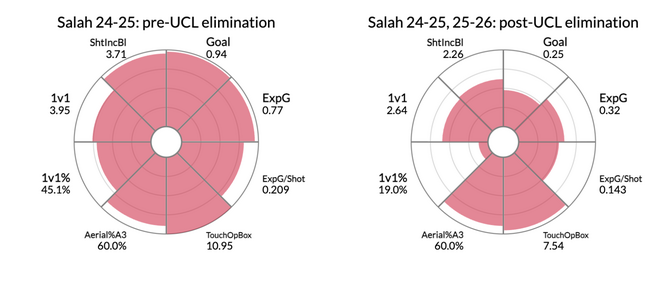
Manager Arne Slot insists he sees signs of life, pointing to four chances created and two shots taken against Chelsea. He pondered whether Salah`s reduced playing time in midweek contributed to a lack of sharpness or a burst of energy. While it`s true that even at his peak, Salah didn`t convert every chance, the sheer volume and quality of those chances, and the regularity with which he buried them, made Liverpool the formidable force they were. If their best player is a shadow of his former self, it logically follows that the team will be too.
3. The Erosion of Intensity: Defending from the Front Dwindles
On paper, Liverpool`s defensive metrics – fewer passes per defensive action and lower opponent pass completion – might suggest an improvement. However, this often masks a more concerning truth: they are not leading in games and thus not conserving energy, forcing them to chase the ball for longer periods. This hardly translates to effective defending.
A closer look reveals a significant drop: Liverpool averages 10% fewer recoveries in the attacking third. This is hardly surprising given the departure of diligent pressers like Luis Diaz and Darwin Nunez, coupled with the tragic loss of Diogo Jota. These players consistently put in the hard yards without the ball, often compensating for a more conservative approach from Salah, who was tasked with conserving energy for decisive moments. Now, even Alexander Isak seems to adopt a similar approach, leading to a frequently staggering ease with which opponents, like Benoit Badiashile, can pick passes through Liverpool`s lines into attacking feet.
Beyond the initial press, Liverpool appears unclear about their next defensive steps. A quick flick in midfield, and suddenly Moises Caicedo is running into acres of space. While Alexis Mac Allister might not be at full fitness, someone else should be scrambling to cover that void. In the first half against Chelsea, in particular, there was a remarkable lack of intensity across the board. Was this team really coached by Jurgen Klopp as recently as 18 months ago? The contrast in aggression between Liverpool and Chelsea, despite the latter`s own injury woes (missing six central defensive options by the end), was stark. Chelsea were there for the taking, yet Liverpool never looked capable of delivering the necessary “oomph.” For Arne Slot, this fundamental lack of aggressive pressing and overall intensity might be the most worrying problem of all.



